Myanmar is a land rich with Buddhist history, boasting countless architectural marvels that stand as symbols of devotion and cultural heritage. Among these is Mingun Pahtodawgyi, an ambitious stupa project that was intended to be the largest in the world. While it remains unfinished, this monumental structure captures the imagination of visitors with its grandeur, mystery, and historical significance.
Mingun Pahtodawgyi: A Vision of Grandeur
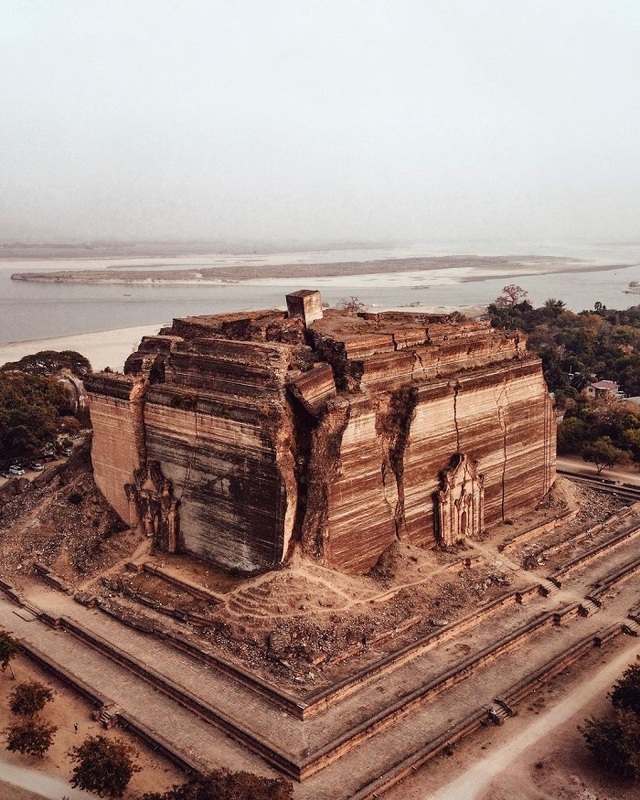
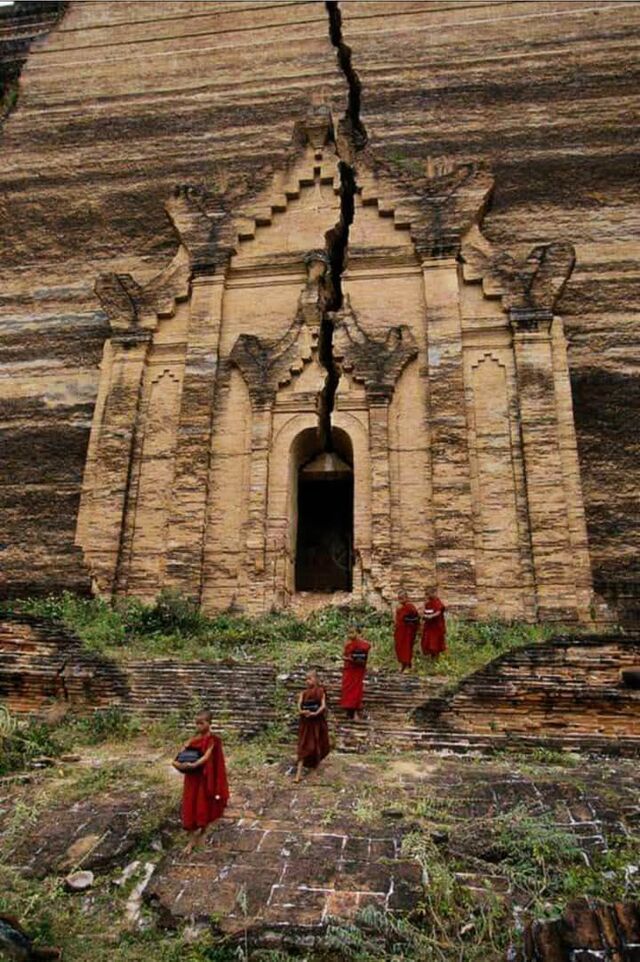
In 1790, King Bodawpaya embarked on a project that was nothing short of ambitious. Mingun Pahtodawgyi was envisioned as a towering stupa, standing 150 meters tall, to house a Buddha tooth relic gifted by a visiting Chinese delegation. Located on the banks of the Irrawaddy River, this structure was designed to be a testament to the king’s devotion and a marvel of the Buddhist world.
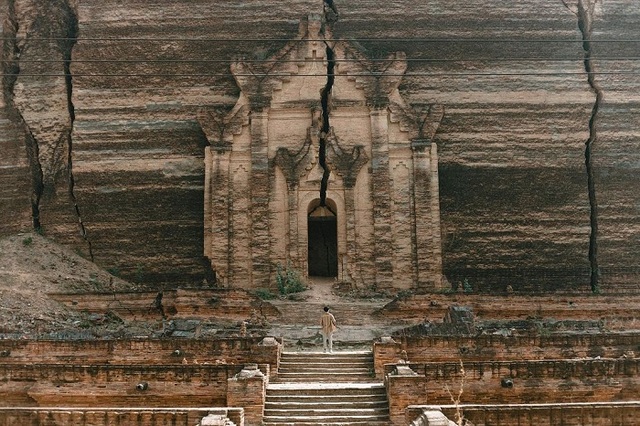
Construction of the stupa was a monumental endeavor, requiring thousands of laborers and significant resources. However, after seven years of relentless work, the project was halted when the structure reached only 50 meters, just one-third of its intended height. Several factors contributed to its incomplete status, including widespread dissatisfaction among the workers and a superstition that the completion of the stupa would lead to the fall of the kingdom. These challenges ultimately turned the ambitious vision into an enduring ruin.
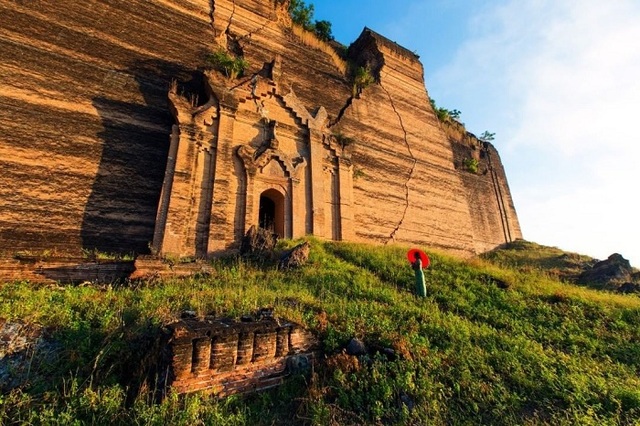
Video
Experience the breathtaking Mingun Pagoda in stunning 4K – watch the video to immerse yourself in the grandeur and history of this incredible structure!
Architectural Marvel of Pahtodawgyi
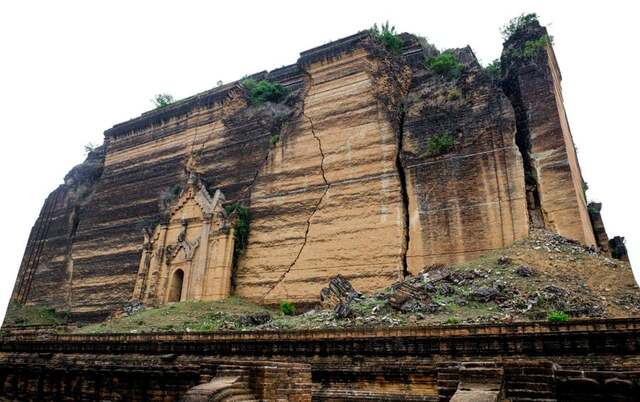
Despite being unfinished, Mingun Pahtodawgyi stands as a colossal reminder of what might have been. The structure, made entirely of red bricks, measures 70 meters wide and exudes an aura of majesty. Its commanding presence against the serene backdrop of the Irrawaddy River has earned it the title of the largest pile of bricks in the world.
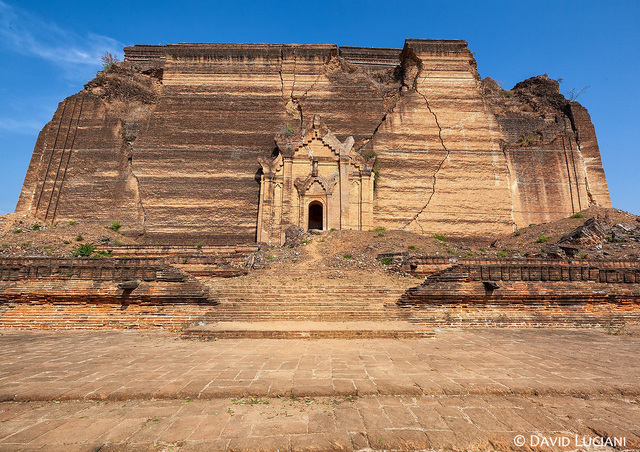
The central entrance gate of the stupa features intricate details reflective of Buddhist culture. Inside, a small temple houses Buddha statues, adding a spiritual dimension to the monument. Guarding the entrance were once two massive lion statues, now reduced to fragments due to an earthquake. These remnants, along with the deep cracks running across the structure caused by earthquakes in 1838 and 2012, give the stupa a weathered yet enduring appearance.
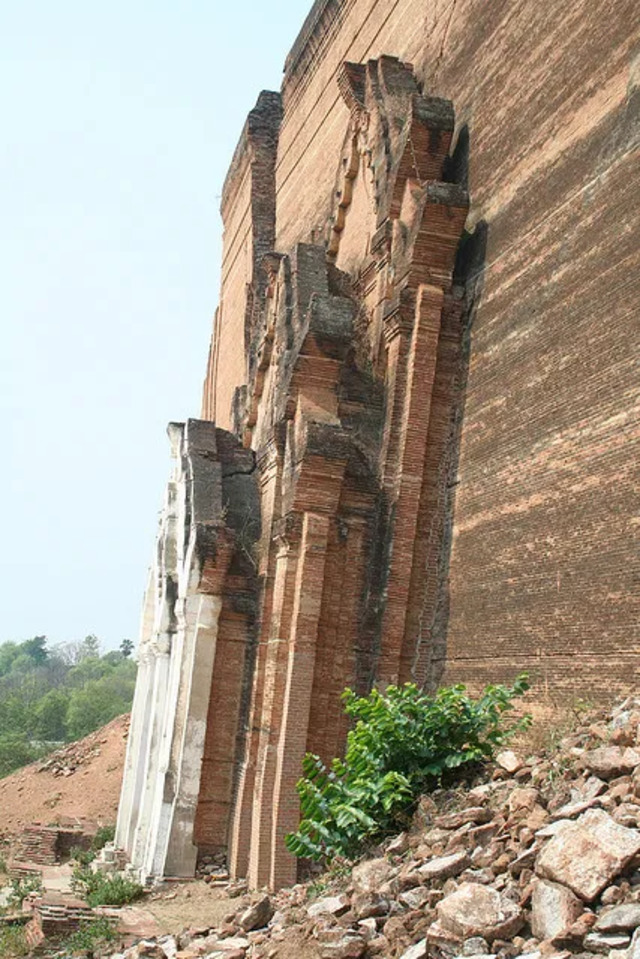
Historical Events Shaping Pahtodawgyi
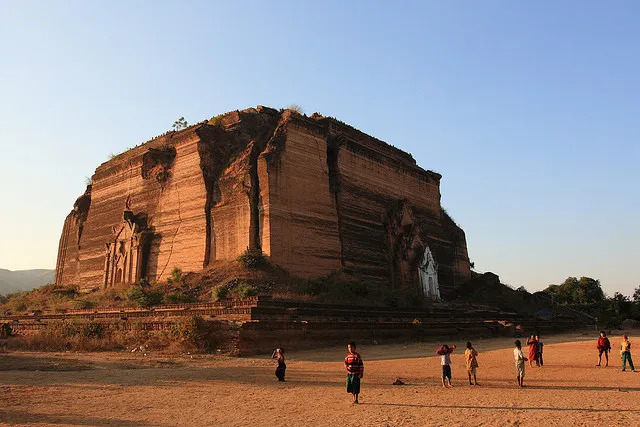
The story of Mingun Pahtodawgyi is deeply intertwined with the history of Myanmar. The prophecy that halted its construction reflects King Bodawpaya’s superstitious nature and his concern for the stability of his kingdom. When he passed away in 1819, the project was abandoned altogether, leaving behind an incomplete masterpiece.
Over the centuries, Mingun Pahtodawgyi has witnessed significant events, including devastating earthquakes that have left visible scars on its facade. These natural calamities have further contributed to its rugged beauty, transforming it into a symbol of resilience in the face of adversity.
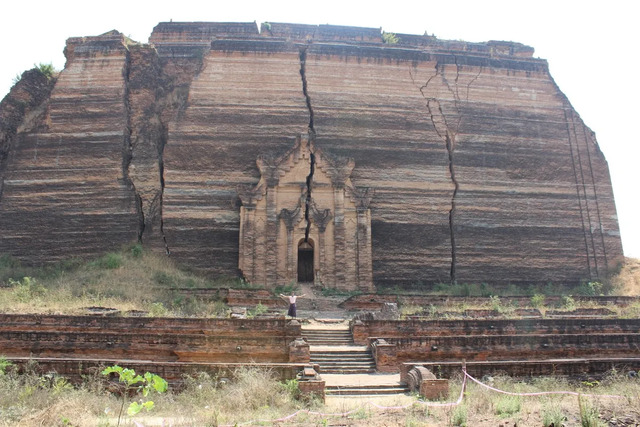
The Giant Bell of Mingun: A Legacy of Ambition
While the stupa remained incomplete, the accompanying bell, known as the Mingun Bell, was successfully cast and remains one of the world’s largest functioning bells. Weighing an astonishing 90 tons and standing 12 feet tall, the bell was originally intended to be installed within the stupa. Today, it sits near the stupa, offering visitors a glimpse into the scale of King Bodawpaya’s vision.
The Mingun Bell is not only an engineering marvel but also a cultural icon. Visitors can strike the bell, which produces a resonant tone that echoes through the area, symbolizing the enduring legacy of the stupa’s spiritual significance.
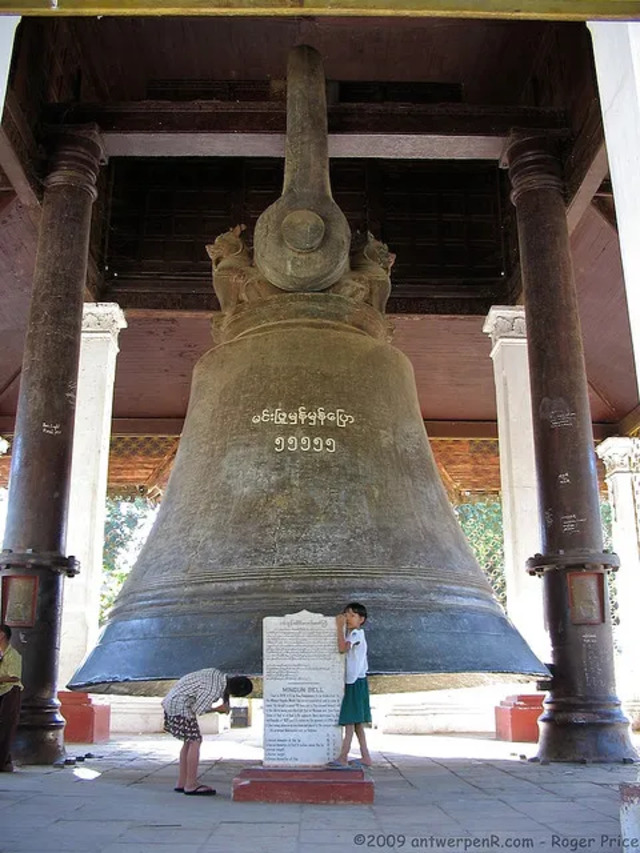
Mingun Today: A Blend of History and Tourism
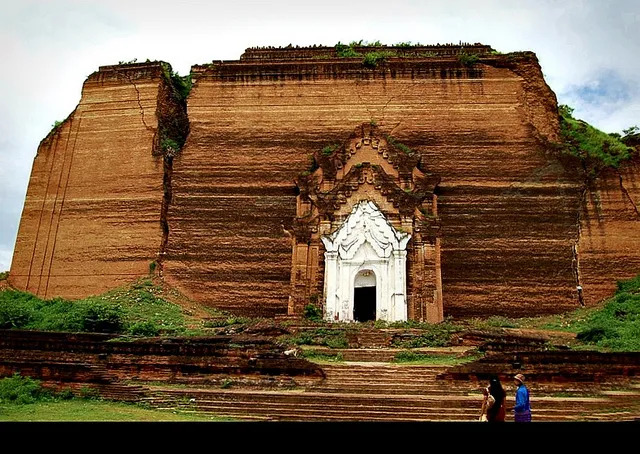
Mingun Pahtodawgyi continues to draw visitors from around the world who are captivated by its grandeur and historical importance. The stupa is located in the quaint town of Mingun, just 10 kilometers from Mandalay. This ancient village, nestled by the Irrawaddy River, offers a peaceful escape and a glimpse into Myanmar’s rich cultural heritage.
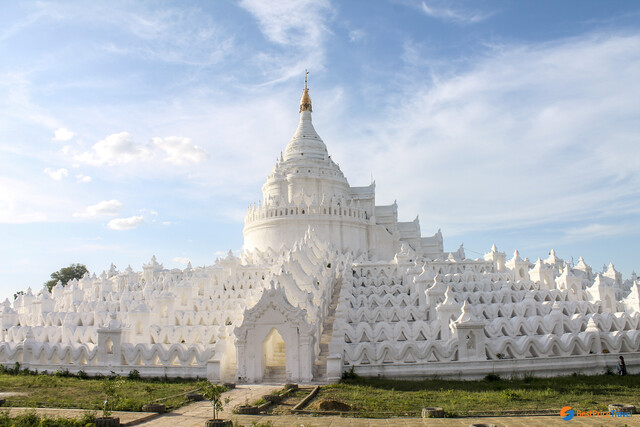
In addition to the stupa, visitors can explore other nearby attractions, such as the Hsinbyume Pagoda. This striking white structure, with its seven wavy terraces representing the seven mountain ranges surrounding Mount Meru, provides a stunning contrast to the red-brick Pahtodawgyi. Together, these landmarks make Mingun a must-visit destination for history enthusiasts and spiritual seekers alike.
Practical Tips for Visiting Mingun
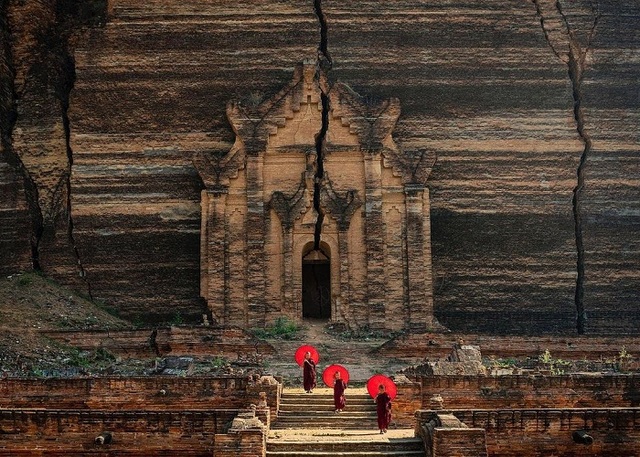
For those planning a visit, the best time to explore Mingun is during the cooler months from November to February. To reach the town, visitors can take a short boat ride from Mandalay, which offers scenic views of the Irrawaddy River. Comfortable walking shoes are recommended, as the area involves some climbing and uneven paths.
While exploring Mingun, don’t miss the chance to photograph the stupa’s majestic facade and the iconic Mingun Bell. The Hsinbyume Pagoda is another highlight that deserves a spot on your itinerary. Together, these sites offer a comprehensive experience of Mingun’s historical and spiritual charm.
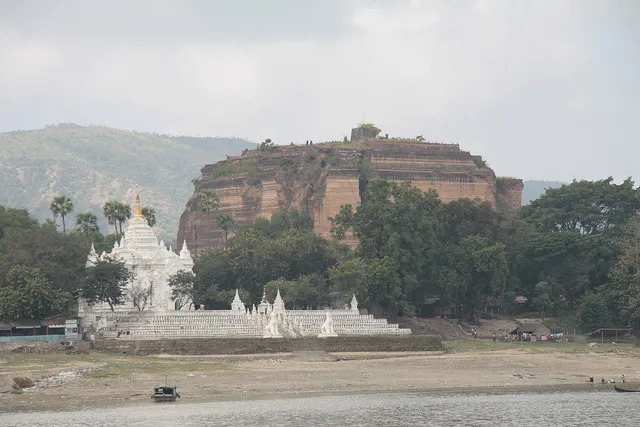
Video
Explore the stunning Buddhist monuments in Myanmar in breathtaking 4K – watch the video to witness the beauty and spiritual significance of these ancient sites!
Conclusion
Mingun Pahtodawgyi may remain an unfinished dream, but its grandeur and historical significance have solidified its place as one of Myanmar’s most cherished landmarks. It stands as a testament to King Bodawpaya’s ambition, the cultural richness of Myanmar, and the enduring spirit of its people. A visit to this monumental stupa is not just a journey through history but also a profound experience of architectural wonder and spiritual reflection.
